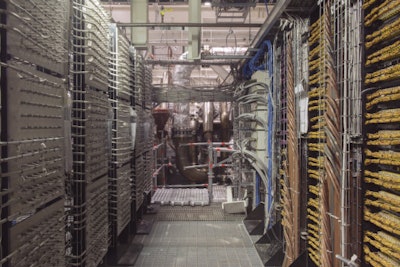
On July 16, one pendulum started to swing in Niskayuna, N.Y. Nearly 3,000 miles away, in San Jose, Calif., another weight hung from a fixed point also oscillated back and forth.
The motion of the first pendulum was slightly off from the other. At one point, software in New York sent a command to equipment attached to the pendulum in California to fix its movement so that the two remote instruments would swing identically.
It sounds simple, but it’s no easy task, says Colin Parris, vice president of software research at GE, who is involved in the project.
Beyond just the continental divide, the time it takes for software and equipment to measure the pendulums’ movement, analyze their position and communicate the data normally introduces delays that make it next to impossible to get the pendulums exactly in sync.
Yet scientists must overcome this technical hurdle if they want machines around the world to really start talking with each other, a dream embodied in the Industrial Internet.
The upside is potentially huge. Seamless machine-to-machine communication could usher in efficiency gains and savings valued at trillions of dollars for industries ranging from aviation to power generation and health care.
That’s why major players in the Industrial Internet space, including GE, Cisco Systems, National Instruments and others, have teamed up to run one of the world’s fastest fiber-optic communications links between New York and California.

It will transfer data at an astonishing 100 gigabits per second, enough bandwidth to download 6,000 movies at once. Compare that to the typical home Internet connection that operates at 15 megabits per second, or about 0.0002 as much bandwidth.
The link, which transfers data at the speed of light, will allow the two systems to instantaneously exchange information about their location, oscilation, speed vectors and other parameters describing the position and movement of the pendulums.
“We’ve run a very big data fire hose across the country that can deliver all the water needed all at once,” Parris says. “This demonstration has very deep implications–if we can put these pendulums back into sync it means we can optimize the functioning of two remote machines. Once we do that, things will get more profound. First we’ll be able to connect two wind turbines so each knows the exact state of the other in real time. Then we’ll connect 15, and onward.”
Says Parris: “In the future, billions of systems—wind turbines, jet engines, people, computers and machines coming together—will be moving exabytes of data around the world all at the same time.”
The pendulum demonstration is part of the Industrial Internet Consortium, a group of 180 corporate and public members in 24 countries dedicated to accelerating innovation in connected, intelligent machines and processes.






















